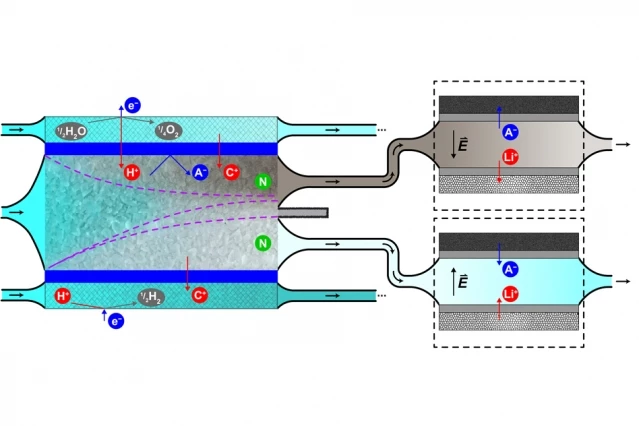A new technique developed by researchers at MIT uses shock waves to remove radioactive contaminants from nuclear reactor wastewater. Called shock electrodialysis, the cleansing process separates waste products from the power plant's coolant system for disposal, while the water can be recycled instead of replaced.
When we think of nuclear waste disposal, we tend to think of big items like spent nuclear fuel or irradiated components from decommissioned reactors. But there is also the day-to-day waste that is the result of minor contaminants finding their way into the water system that cools the reactor and turns its heat into usable power.
The problem is how to remove these contaminants in a safe and economical fashion without interfering with reactor operation or having to carry out expensive water replacement operations.
To achieve this, the MIT team has been working on shock electrodialysis. Originally invented to remove salt from seawater, the process uses a deionization shockwave in a tube of water to push electrically charged ions into a charged porous material that acts as the tube's lining. The upshot of this is that, if the ions consist of the desired element for disposal, they can be selectively filtered out of the coolant water flow, which can amount to 10 million cubic meters of water per year for a large reactor.

So far, the technique has been used to remove 99.5 percent of the radioactive cobalt and cesium from simulated wastewater that also contains boric acid and lithium, which are left behind. This means that up to two-thirds of the water can be recycled. The process is scalable and MIT says that it can not only be used to clean reactor cooling systems, but also for large-scale applications like removing lead from drinking water.
In addition to routine cleaning operations, MIT says that the technique can be used for handling contaminated water in disaster situations like the crippled Fukushima Daichi power plant in Japan.
The research paper, which was authored by professor of chemical engineering at MIT Martin Bazant, graduate students Mohammad Alkhadra, Huanhuan Tian and postdocs Kameron Conforti and Tao Gao, is published in Environmental Science and Technology.
Source: MIT





